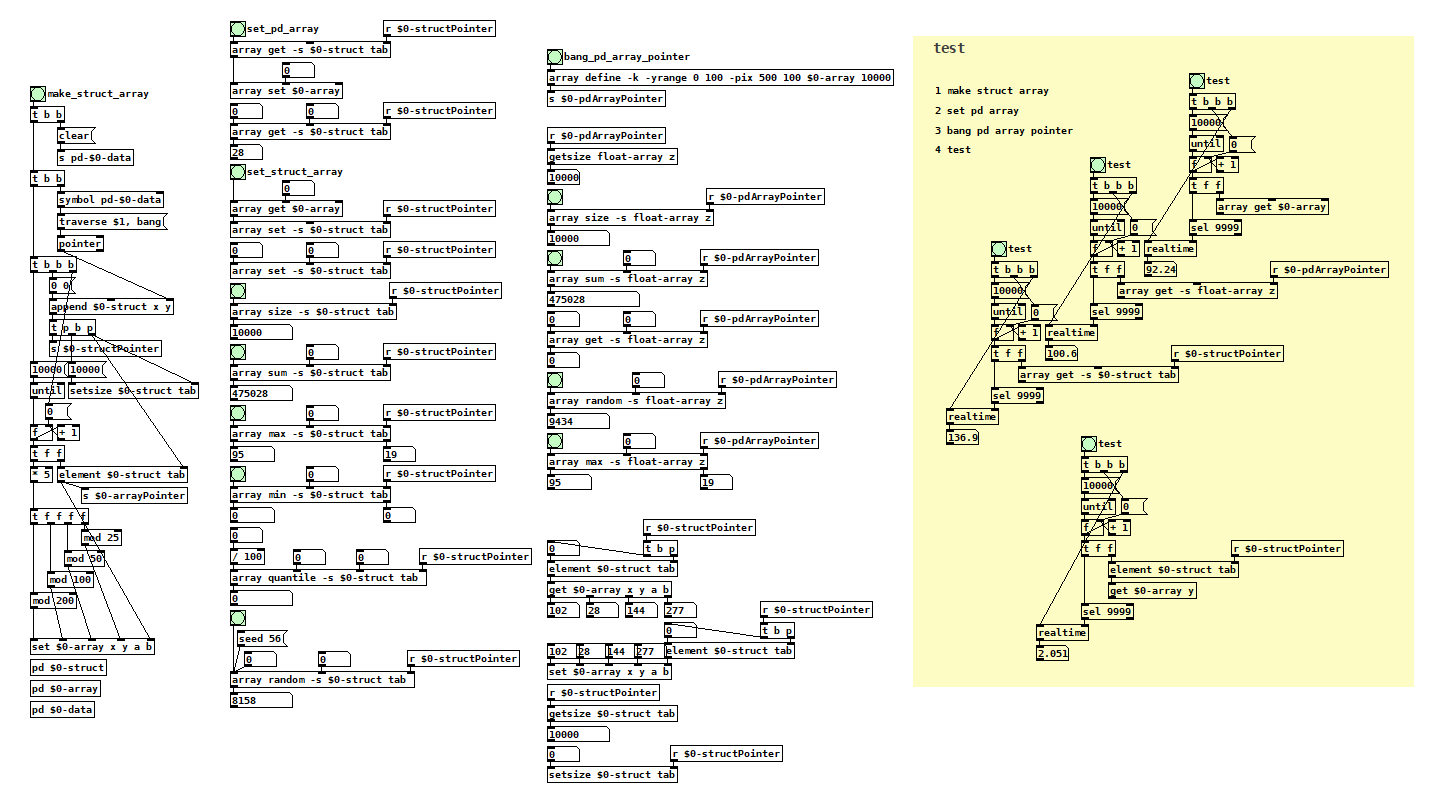i am not sure if this patch is useful. i tried to find out how to use the -s (struct) flag with the [array] object.
this way it is possible to use data structure arrays with [array]. while it is possible to make data structure arrays with multiple variables [array] accepts only field y from data structure arrays.
interestingly it is 50 times faster to read [get] with [element] pointer than to read [array get] or [array get -s] (with 10000 elements).
with an array with more than 100000 elements the [get] method is the only one that does not take forever...
if i set the pd array with a data structure array with more than 10000 elements, the pd array is not drawn correctly (but the values are still there).






